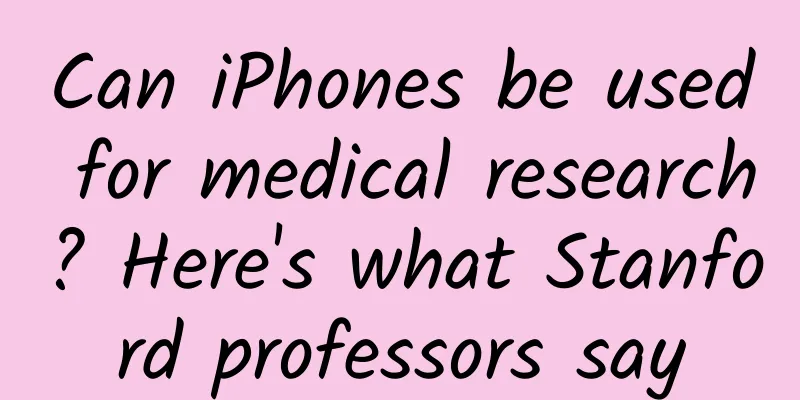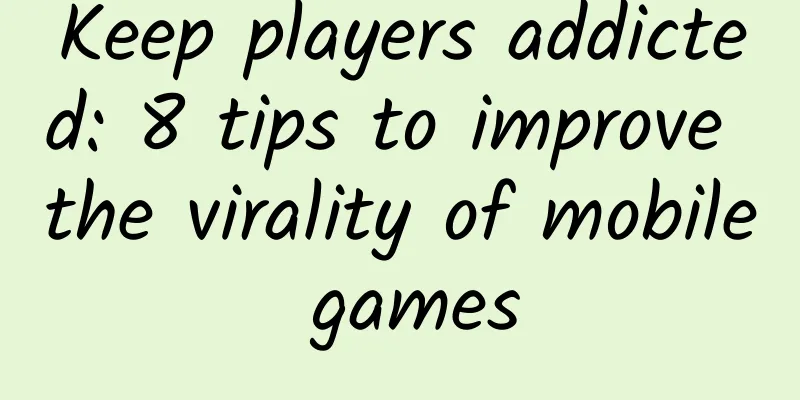Can iPhones be used for medical research? Here's what Stanford professors say

|
Since 2007, more than 1 billion iPhones have been sold worldwide. Every iPhone in our hands is not only an all-round smart phone, but also a collection of various components such as gyroscope, camera, touch screen, etc. You may use your iPhone to play games and watch movies every day, but you may not have thought that the iPhone in your hand can also be used to study diseases? When iPhone participates in medical research Oliver Aalami is an expert in peripheral vascular disease at Stanford University. This is a common limb vascular disease. The typical symptom is that when the patient walks, he will feel obvious pain in the legs and other affected areas. After resting for a period of time, the pain will gradually improve, and this will repeat itself and there will be no long-term cure. The severity of peripheral vascular disease is usually related to the patient's activity level. Therefore, the commonly used diagnostic method in the medical field is the "6-minute walk test" - as the name suggests, it is to let the patient walk under the care of medical staff while recording data to assess the severity of the disease. This test method seems simple, but there are still many inconveniences in actual operation. As a researcher in peripheral vascular disease, Aalami's biggest headache is that it is not only difficult to recruit the right number of patients, but it is also obviously not practical to have each patient undergo multiple tests under the care of medical staff. In 2015, when people were talking about the 120,000 yuan Apple Watch, Apple's release of ResearchKit at the same time gave Aalami a new research direction. ResearchKit is a software framework for the medical research field that can be used to develop various apps to help researchers collect diverse medical data. Aalami's team eventually used ResearchKit to develop a free app called VascTrac, which is a dedicated "6-minute walk test" app. Patients can use VascTrac to take tests at any time. By calling various sensors in the iPhone, the iPhone can obtain the patient's heart rate, time, distance and other data, and feed it back to the research team through the Internet. This process takes less than 15 minutes. Thanks to ResearchKit, Aalami's research can not only obtain medical data more conveniently and quickly, but also more easily recruit patients to participate in the research. In the summer of 2017, Aalami recruited 180 patients aged 60 and over to complete the validation of the project. In the summer of 2018, Aalami will also start the second round of recruitment. They will recruit 100 patients to conduct experiments in a controlled medical environment, and then let the patients go home for testing. By comparing the data of the two, they can more effectively improve the test app, and cooperate with pharmaceutical companies to develop new drugs to further improve medical research. Is postpartum depression hereditary? Cell phones may help find the answer ResearchKit can not only conduct medical research on physical diseases, but also greatly benefit the research on mental illnesses. Samantha Meltzer, a researcher from the University of North Carolina, is conducting a study called PPD ACT. Their research found that on average, one in eight mothers suffers from postpartum depression. So, is there a congenital tendency for postpartum depression? Is it related to genetics? In order to figure this out, PPD ACT needs a large number of female samples for research. But how can we find enough pregnant women, and how can we screen out suitable women? Finally, Meltzer's team developed an app called PPD ACT based on ResearchKit, which has a complete set of questionnaires built in. In addition to answering some questions, the app also uses the iPhone's microphone, camera and other components to detect the mental state of the respondents. For women who pass the test, the project team will mail them a saliva sampling kit to collect DNA for research. Since its launch in 2016, more than 16,000 women have downloaded PPD ACT. The project team has sent saliva sampling kits to more than 5,300 of them, and ultimately more than 3,200 samples are undergoing genetic sequencing. Currently, PPD ACT has been launched in the United States, Canada, Denmark, the United Kingdom, Australia and other countries. Meltzer said that this is the fastest and largest genetic sampling in history, and she hopes to use this project to gradually expand the scope of respondents. Technology in your pocket takes medicine further After three years of development, there are more and more medical projects developed based on ResearchKit. Experiments that previously had to be completed in laboratories and hospitals can now be completed on the iPhone. The Autism & Beyond app uses the iPhone's front-facing camera and innovative facial recognition algorithms to analyze the emotional responses of children as young as 18 months old to videos. Children do not have to be examined by a specialist in person, and can be screened and diagnosed for autism through their mobile phones: There are also apps like mPower that diagnose and treat Parkinson's syndrome, which use the iPhone's gyroscope and other functions to measure participants' flexibility, balance, gait, and memory, thereby helping researchers diagnose and better understand Parkinson's syndrome: There are countless similar examples. ResearchKit is being accepted by more researchers and is gradually becoming a part of modern medicine. Of course, ResearchKit also has some problems. For example, the way each person uses their phone varies greatly, so the sample data collected will also have a certain degree of difference. But for researchers, mobile phones can recruit more participants without being restricted by time and space; they can bring research out of the laboratory and into every corner of the world. As Dr. Helen Link Egger of Duke University Medical Center in the United States expects: We’ve done everything we can with traditional research, and now we can go even further with the technology in our pockets. |
<<: WeChat subscription accounts have undergone a major revision! What impact will this have?
>>: Give technical staff some non-technical advice
Recommend
Can Google still make a living if it returns to the Chinese market?
Recently, there is news that Google has made a pr...
WeChat Enterprise Account Development: Encryption Scheme and Global Return Code Description
This article includes the detailed scheme for enc...
The rise of music short videos, will the next Kuaishou be born?
As early as 2014, an app called musical.ly was la...
Payment license trading: The highest bid is 3 billion yuan, and Internet payment is in great demand
Recently, a piece of information about the transf...
Understand what product operation is in 10 minutes!
What is operation ? All means used to connect use...
QQ Kandian advertising format and material specifications!
QQ Kandian is a high-quality content consumption ...
How to cure "universe-level directionlessness" in one go? Scientists have come up with this method...
Who are you? Traveler... Where are you? Outside.....
How to become a "100,000 likes" answerer on Zhihu? The Secrets of the 4 Major Internal Skills
Zhihu, a slow company, has now developed into a u...
World Pangolin Day: Protecting the “Forest Guardians”
Produced by: Science Popularization China Author:...
Hair style design mini program function, how much does it cost to make a barber shop WeChat mini program?
“The head can be cut off, but the hairstyle canno...
What are the Google SEO optimization techniques? Does Google SEO promotion really work?
Most domestic companies basically have their own ...
Super practical! Let’s talk about icon design process and tips
Icon design requires proficiency in the use of so...
Academician Chen Jiansheng: Decoding the Universe: The Golden Age of Space Surveys is Coming
Editor's note: General Secretary Xi Jinping p...
What benefits can a brand become an internet celebrity?
In recent years, the concept of internet celebrit...









